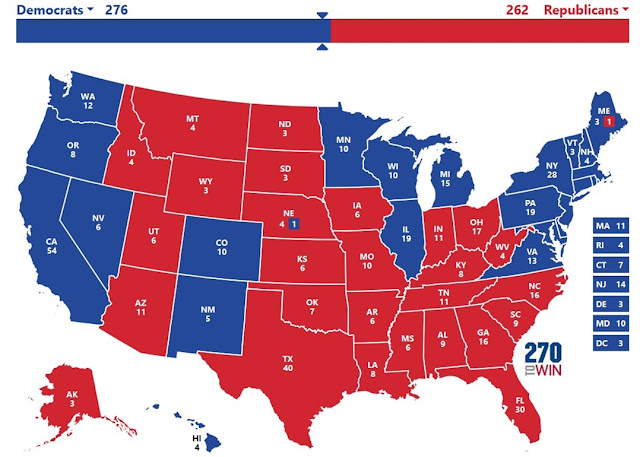It is nearly a month until the 2024 election and if there is one constant in American politics for many years it has been that the Catholic vote is expected to be relatively evenly divided.
As shown below [Click tables to enlarge], adult Catholics in the U.S. have more often tended to identify as Democrats than Republicans in the last 48 years. Partisanship can be read two ways—one way including independents who “lean” towards one major party over the other or another way without these leaners who are considered independents. Either way, in 2022, the General Social Survey (GSS) indicated an edge in Democratic partisanship over Republican among adult Catholics (without respect to registration or intention to vote).
CARA surveyed U.S. adult Catholics in December 2023 as the 2024 campaign was just beginning. At that time, 49% self-identified as Democrats (including independent leaners toward Democrats) and 39% self-identified as Republicans (including independent leaners toward Republicans). Excluding independent leaners, adult Catholics were 42% Democrat and 31% Republican.
While more often Democrat than Republican, Catholics have been more likely to identify their political ideology as conservative rather than liberal since 1980. In 2022, 34% of adult Catholics were conservative and 42% were moderate. Twenty-four percent consider themselves to be liberal.
I have often described the average American Catholic voter as a center-right Democrat. This leads Catholics to sometimes be conflicted. Indeed, Catholics are the only major religious group in the U.S. that has voted as a plurality or a majority for Democrats and Republicans for the presidency in elections in the last 50 years.
It is important to consider that just as there is no national vote for the presidency there is also little meaning to the aggregate vote of U.S. Catholics. As always, it is the popular votes in the states that are key as they determine Electoral College outcomes. As I have noted elsewhere regarding the 2016 election, “Catholics in some key electoral states, voted for Trump by large margins, which resulted in narrow state-level wins among the broader electorates there, propelling him to the White House” (Catholics and the 2016 Elections in Catholics and US Politics After the 2016 Elections, 2018). This was most important in Michigan and Florida in that election year.
Based on current polling of the whole electorate (i.e., not just Catholics), if the election were held today, September 30, this is what the Electoral College map would probably look like (i.e., if recent aggregated state polls reflected votes).
The CARA survey of Catholics from December 2023 indicated that then Democrat candidate President Joe Biden had a 41.8% favorable rating compared to 38.4% for former President Donald Trump. Some 47.3% had an unfavorable rating of Biden as did 52.2% of Trump. At the time of polling, adult Catholics felt that the most important problems facing the country were the high cost of living/inflation, the economy in general, guns/gun control, and immigration. These issues remain among the most important to voters today.
For decades we always had some insight on how Catholics might vote from the primary exit polls. However, in recent elections those responsible for these surveys have not asked questions allowing one to understand the opinions of any religious group (Sociologically speaking, “Evangelical” is not a religious group). It is also the case that with President Biden dropping out after the primaries and Vice President Harris then assuming the nomination we would not have exit polls that address both of the major party candidates.
However, the Pew Research Center has conducted a survey evaluating religious group preferences in late August/early September. The results of this survey indicated that 52% of Catholics intended, at that time, to vote for former President Trump and 47% for Vice President Harris. The margin of error for Catholics in the survey was ±3.2 percentage points. Thus, the difference between candidates among Catholics was not discernible in this survey.
In 2020, the American National Election Survey (ANES) indicated 20% of voting eligible adults in the United States self-identified as Catholic. If this share remains consistent in 2024, we can assume there are nearly 50 million Catholics who are eligible to vote in the upcoming election. Approximately 70% of the eligible would be expected to vote if patterns similar to 2020 reoccur.





